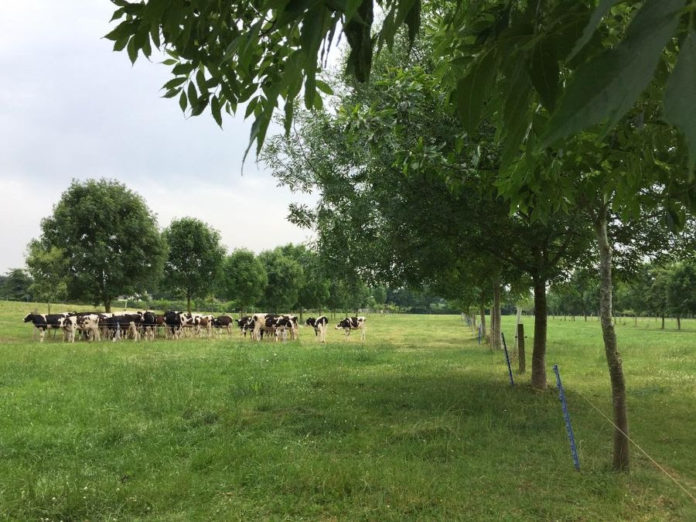 Drought – Keep that soil covered.
Drought – Keep that soil covered.
We know the best tool we have to mitigate the effects of drought is soil cover, but what does this mean on a practical level for difference farming operations?
We have had no rain, other than the odd dust-settling drizzle, for almost eight weeks. Although there may be some proper rain on the way, there is potential more dry weather.
Should we make hay while the sun shines? For livestock farmers that do have some grass, taking the opportunity to mow for silage is tempting. It may or may not be wise, but It should be factored into your grass budgeting that grass mowed in a drought will take a long time to recover, and the mowing will increase the drought effect in that acreage. Without the plant cover, the evaporation will increase, and without leaves, the plant’s ability to cycle water is lost. Plant leaves can utilise dew at night and leaves are also a vital part of the plant’s hydraulic system and are required to pull water from the soil through the xylem.
When grazing livestock during dry conditions it is best not to let them eat the pasture very short, and perhaps avoid topping (all but the wettest fields) until rain is promised. Leaving grass cover on your pasture fields will reduce evaporation and allow plants to keep growing and photosynthesising. If you use paddocks or have the infrastructure to rotate your animals, move them through the paddocks quickly, leaving plenty of grass behind. This will not only leave a bank of grass for the next rotation but will allow the grass the best chance to keep growing. If pasture is grazed very short in drought conditions the plants may go dormant.
In addition to the dry weather, there have been some night frosts, although forecast, were still unexpected because the days showed little sign of frost potential. The first many seen of it was scorched and withered potato plants, and dead squash and tomato seedlings in the glasshouse. The preventive would have been a horticultural fleece to cover vulnerable plants. But to glean some good from any losses, plants that did survive are potential good hardly specimens to earmark for seed-saving.
The frost also claimed a part of the future harvest from some fruiting trees. For some growers, mid-season apples seem to have taken a hit. To check, give the setting buds a gentle pull with your fingers, if they come away from the stem easily, the frost has damaged them. If the buds stay firm, then it is likely that they are unharmed. Frost events like this highlight the importance of planting a diverse range of varieties with different flowering times. Organic orchardists are also at an advantage because their trees are not fertilised. Therefore they do not have an excessive amount of tender sappy growth which is vulnerable to the late frosts.
For broadacre potatoes, “earthing-up” is the most economical and traditional method of frost protection. Small potato plants that did get burned have good potential to recover, depending on the extent of the damage. To help with frost recovery and to defend against imminent blight in potatoes; grower and educator, Jim Cronin, suggests alternate applications of Horsetail* and liquid seaweed, every ten days until flowers set.
*Horsetail (Equisetum Arvense)
Horsetail, the plant, is most noted for its silica content. In a recent paper in the journal, Nature, researchers at the University of Bayreuth found that silica increases the ability of soil to absorb and store more water for plants during extended drought periods. Gels that contain enormous amounts of water, form in the soil out of amorphous silica molecules. These water supplies are easily accessible to the roots of plants. Click here to explore this paper in full.
For longer-term drought resiliency, the Charles Dowding style of no-dig horticulture seems to win hands down. Mulching the soil with 4-6 inches of good quality compost can retain moisture and healthy growing conditions for months of drought without irrigation.
In arable farming, min or no-till methods, keep periods of exposed soil to a minimum, using plant residues as a mulch and sowing cover-crops in between cash-crops to keep growing plants in the ground.
There is potential for a well-designed tree or shrub planting layout to enhance any farming system. There can be many advantages to adding an agroforestry layer to your operation, but improved water cycling and drought resilience are undoubtedly some. For some inspiring videos of trees in different systems, click here.

ORF is a Curse
Any sheep farmer with experience of orf will never forget it.
Orf is also known as contagious pustular dermatitis, and is caused by a Parapoxvirus; it affects sheep and goats and less commonly humans. It presents as very painful skin lesions on or near the lips and muzzle, and occasionally on the skin above the hooves. Infected lambs will transfer the infection to the teats of their ewes, leading to reduced suckling, teat-end damage, and consequently mastitis. Young lambs may die from starvation.
Typically the lesions last for a few weeks as the body fights off the virus, and the disease runs its course.
I have encountered several DIY treatments, including petrol, WD40 and poteen – none of these work. The lesion won’t resolve until the body fights off the virus. If the lesion is superficially infected with bacteria, antibacterial sprays, and antibiotic injection will be of some benefit. Anti-inflammatories will help with the pain and lead to improved appetite.
Control is based on biosecurity (quarantine bought in stock) and vaccination*. The scabs which fall off lesions are packed with the virus, and these remain viable in the environment for several months. Thus it is almost impossible to eradicate orf from the premises.
Care must be exercised when handling the vaccine since it is a live vaccine, and self-injection will have very painful results.
*Please note that the routine use of vaccines must be included in your animal health plan and accompanied by a letter from your vet. Extended withdrawal periods for antibiotics and anti-inflammatories medication must be observed and recorded.
 For the first time in Ireland, NOTS are delighted to present a fully-interactive online course covering the subject of “Growing in Polytunnels” with Klaus Laitenberger. This exclusive NOTS programme begins on May 27th. Register on www.not.ie or click here.
For the first time in Ireland, NOTS are delighted to present a fully-interactive online course covering the subject of “Growing in Polytunnels” with Klaus Laitenberger. This exclusive NOTS programme begins on May 27th. Register on www.not.ie or click here.
 Common Horsetail Equisetum arvense
Common Horsetail Equisetum arvense
Common Horsetail is perennial and native to Ireland. It is a member of the Equisetaceae family; the sole survivor of a line of plants going back three hundred million years. It is a descendant of ancient plants that grew as tall as trees during the carboniferous period of prehistoric times and members of this family gave rise to many of our coal deposits.
Recipe for BD508
Simmer 4 handfuls of horsetail for an hour in 2L of water. Stain into a 20L knapsack sprayer and top up with clean water – apply this silica-rich brew to plants and soil.
 Cuckoo
Cuckoo
It is cuckoo season.
They are extraordinary migratory birds that have carved a bizarre niche in the ecosystem. The details of how they act out their infamous deception only add to their wonder.
In the programme archive of” Mooney goes Wild” on RTE Radio1 from 6th August 2018 there is a fabulous podcast on the cuckoo. Click here to listen.








